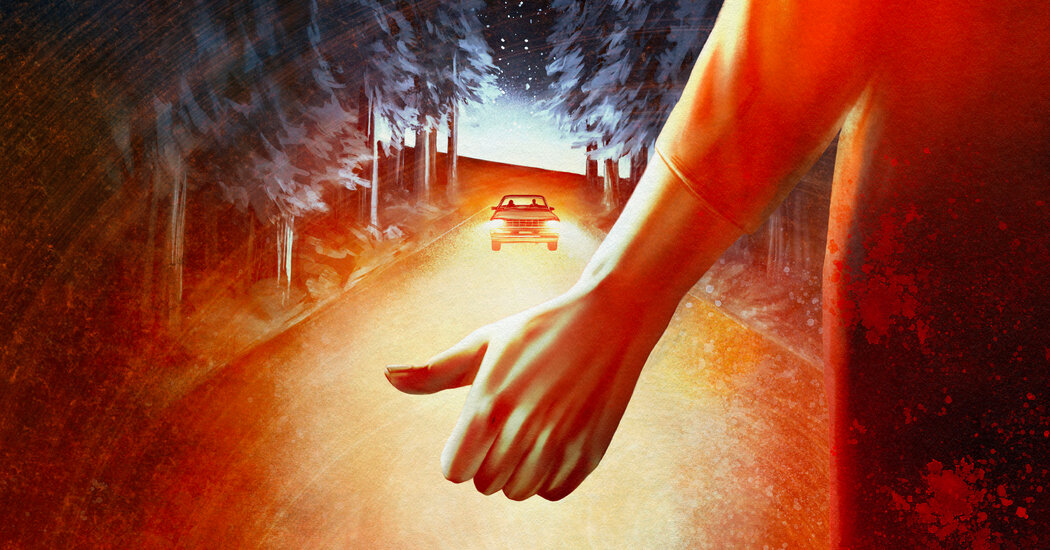Simone St. James is known for brilliantly mixing thriller elements with supernatural mayhem, and MURDER ROAD (Berkley, 342 pp., $29), her most recent novel, offers readers plenty of both.
During the summer of 1995, April and Eddie are on their way to a resort for their honeymoon when a wrong turn sends them down a dark road in the middle of the night. The newlyweds pick up a hitchhiker, and then realize the young woman is bleeding. April and Eddie take the woman to a hospital, but she dies.
The couple soon learn the hitchhiker is just one of many who’ve met their demise on Atticus Line. The road, according to locals, is haunted by a ghost known as the Lost Girl, “a stupid legend,” who has allegedly been killing people for decades. Under pressure because of the unsolved murders, the police unsuccessfully try to pin the killing on the couple, and after they are cleared of any wrongdoing, April and Eddie stick around and try to get to the bottom of things. But the newlyweds have their own dark past, and as it catches up to them, so does the darkness that haunts Atticus Line.
Fast, chilling, entertaining, unexpectedly touching, and with two broken, memorable characters at its core, this might be St. James’s best novel yet.
Argentina’s new wave of horror fiction is quickly finding an international audience, and in the process, has introduced the world to literary giants like Mariana Enríquez and Samanta Schweblin. Now, Marina Yuszczuk joins that list of Argentine horror stars with THIRST (Dutton, 241 pp., $28).
The book, which is translated by Heather Cleary, is a unique vampire novel full of eroticism and feminist rage. The story takes place in two different periods. First we follow a female vampire escaping persecution, making her way across Europe over the centuries and finally landing in Buenos Aires, where she experiences the city’s early days as well as the yellow fever pandemics of the late 1800s. Eventually, she’s forced to go into hiding in a cemetery. The second part of the book follows a divorced mother who’s dealing with her own mother’s declining health and who receives a strange old photo from an ailing woman that links her to the vampire.
This gripping tale is full of queer representation and lush, lyrical passages, all while exploring death with an air of nihilism. “We’re all standing at death’s door,” Yuszczuk writes. “Someone has to be next in line.” Vampires are making a comeback, and Yuszczuk is spearheading their revival with this bloody novel.
In addition to scaring readers, the tales in THROUGH THE NIGHT LIKE A SNAKE: Latin American Horror Stories (Two Lines Press/Calico, 228 pp., paperback, $16.95) are meant to elicit a profound sense of unease, and they pull it off with flying colors.
The anthology collects 10 stories from some of Latin America’s best purveyors of what the editor Sarah Coolidge calls “narrativa de lo inusual” — narrative of the unusual. In Mariana Enriquez’s “That Summer in the Dark,” translated by Megan McDowell, two young friends become obsessed with serial killers and then must confront the reality of a murderer in their own building. Maximiliano Barrientos’s “The Third Transformation,” translated by Tim Gutteridge, is a superb body horror nightmare full of mystery and also breathing meat flowers with teeth. Julián Isaza’s “Visitor,” translated by Joel Streicker, is the funniest story in the collection, and perhaps the one with the greatest twist. It follows an elderly woman who rescues an alien and develops a symbiotic relationship with it that leads to murder.
These stories — relentlessly unsettling as they are — serve as a fantastic introduction to a growing movement that’s bound to enrich, and help diversify, speculative fiction for years to come.
STITCHES (Viz Media, 112 pp., $18) combines the art of Junji Ito, perhaps the world’s most renowned mangaka, with the brief, punchy short stories of Hirokatsu Kihara, translated by Jocelyne Allen, to craft a delectable collection of illustrated scary stories.
Nine very short tales (more horrific morsels than full stories) make up this book, and they all share some cohesive elements: They open with a blunt opening line like “This happened when M was in elementary school,” followed by a supernatural event and then a surprising twist.
Ito and Kihara fully embrace horror in these tiny tales. In “Face,” a woman sprouts a small face on the back of her neck that must be removed by a priest. “Library” is about the ghost of a young girl who haunts a school library. “The Play” tells of a special staging of “Pinocchio” in which an otherworldly presence insists on participating. “Folk Dance” and “The Kimono” are opposite sides of the same coin: In the former, a photographer fails to capture an image of a dancing specter; in the latter, a friendly, playful ghost shows up in a family picture.
Ito, whose classics like “Uzumaki” and “Tomie” are horror staples, is a master at creating creepy details and expressive faces that help carry Kihara’s succinct terrors. Together, the two masters create their own brand of dark magic.


